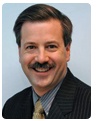Recap: Gartner EA Summit in Orlando

 This guest post comes courtesy of Larry Fulton. Larry is an independent consultant who spent 14 years as a solutions and enterprise architect at UPS and 3 years consulting on, among other things, strategic integration infrastructure issues and enterprise service bus (ESB) technology as a senior analyst at Forrester research.
This guest post comes courtesy of Larry Fulton. Larry is an independent consultant who spent 14 years as a solutions and enterprise architect at UPS and 3 years consulting on, among other things, strategic integration infrastructure issues and enterprise service bus (ESB) technology as a senior analyst at Forrester research.
The enterprise architecture community is always surprising to me for its enthusiastic optimism - remember that this is a field where the majority of us spend a lot of our time explaining what we do and why it is valuable, often to our own management. Attendees were very clearly engaged in the session topics, there were plenty of insightful questions, and the attendees I spoke with personally saw a lot of value in the material presented. The focus was on the practice of EA rather than specific technical aspects of modern enterprise architecture, which of course begs the question what EAs are doing to stay on top of the technology landscape.
Gartner sees the influence of EA growing over time, especially in those organizations where EA is successfully involving itself in the business and its processes. Aside from the expected pro-EA and how-to-improve-credibility messages, I heard a number of new and refreshing perspectives on EA and its future:
Gartner's Anne Lapkin confronted the "Is EA an art or a science?" dilemma head-on, and clearly stated that many aspects of EA are in fact an art. She was referring specifically to the real work of fitting and re-fitting EA's mission to the current and evolving needs of real businesses. There may be a lot of well-defined process around the tools of the trade - modeling various aspects of current and future architecture, establishing effective governance processes, and so forth - but it takes real insight based on experience to assess what EA can and should be doing to help the business succeed, and to know when that needs to change as the business itself evolves. This is an area where many experts, have been reluctant to come right out and say, "Look, you need to have the right leaders, and you can't necessarily just pick someone who is skilled in another area and expect to train them to this level of EA perspective". Another way to say this is that skilled solutions architects need to be part of EA's activities, but solutions architects don't necessarily have the perspective to define the EA agenda.
Betsy Burton's sessions illuminated the reality that enterprise architects often must fill the role of counselors - working with disparate teams with different perspectives to find common ground and move forward. On the broader business front, this same theme emerged in her recommendation that enterprise business architectures need to include a model of how people actually work together in an organization.
She also mentioned that EAs need to spend at least five per cent of their time playing so they can remain aware of current technologies. My own opinion is that this is not enough - unless you can commit at least half a day each week to some kind of research, which is to say at least ten per cent of your time, it is very difficult to stay on top of important developments.
I particularly enjoyed Bruce Robertson's session on "architecting for emergence". He talked about "EA light", or ways that EA groups should focus on what matters the most and promote application team innovation elsewhere. The idea of establishing policy and technology "guard rails" that essentially say you can do what you like as long as you conform to these particular things and as long as you don't do these other things is not new. But, looking at an organization in a methodical way to identify exactly those rules that really matter and promoting choice elsewhere is where many EA groups need to be headed. Certainly his advice to EA groups to understand local influences and priorities and their relationship to enterprise influences and priorities is a good idea for any EA group, and especially those operating in large organizations.
One of the keynote speakers, Mark Rashino, represented in my opinion the central message to EAs - IT needs to ask itself, "What new strategic capabilities can I offer?" When CIO's are asking themselves that question but don't have an answer, where will they turn? EA needs to be ready to answer that question, whenever it is asked.

